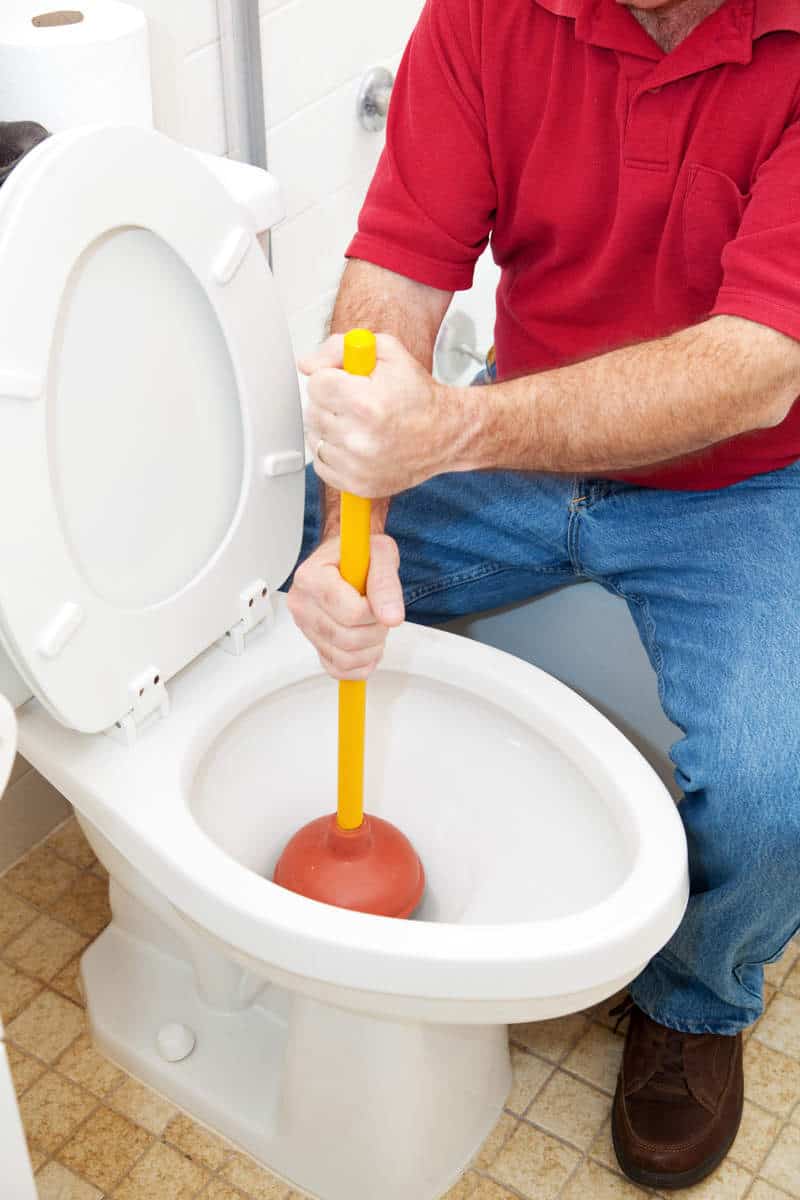If you own a toilet, then you must have a plunger. These two go together like Snoopy and Charlie, the Lone Ranger and Tonto, Laurel and Hardy, Batman and Robin, or America and Apple Pie.
Knowing what type of plunger to own seems like a simple decision – buy the cheapest one possible. As toilet technologies evolve, however, we are finding that there are specific advantages to consider when choosing from the various types available today.
Here is the information you will want to consider.
1. Sink Plunger
Did you know that the standard pink plunger that you see in bathrooms all of the time is meant for sinks instead of toilets? The rubber cup on the end can work in the toilet if you can fit the entire lip of the ring around the trap to create a seal. It tends to perform better on flat surfaces because it will struggle to gain suction otherwise.
You’ll find that this plunger can work if you’re desperate and sometimes provide results, but it isn’t the best option that is available today.
2. Accordion Plunger
This design is the one you’ll want to purchase if you want the power to clean out toilet clogs. It offers a smaller cup that will fit into your drain perfectly inside the bowl. Then you press up and down to create a vacuum that works to dislodge the clog. The different “folds” of the device can make it a challenge to use at first, but once you get the hang of things, you’ll wonder what you ever did without this product.
3. Standard Toilet Plunger
If you’re tired of the hassle that an accordion plunger causes, then this is your next best option. It will also go straight into your drain in the bowl to ensure there is a tighter seal to create a vacuum. You can also fold the flap that extends on this device upward to make it useful as a sink plunger as well.
How to Be Successful with Your Plunging
Most plungers are successful if you are patient and provide a little elbow grease to the situation. If you are struggling with a challenging clog and you have one of these plungers, then these three steps will help to ensure that you have a successful outcome.
1. Make sure that you are plunging vertically and straight. If you try to work at an angle, then you won’t create the seal that is necessary for the vacuum to form.
2. Get the air out of the plunger cup as you begin to set your seal. You can do this by pressing the plunger down slowly during the first couple attempts. This process creates a stronger seal because there isn’t a bubble of air working against you.
3. Submerge your plunger whenever possible. If you don’t have enough water in the bowl, then add some from a close sink or use a bucket. It will give each plunging thrust added strength.
Plunging a toilet is not the most pleasant of household chores to do, but if you have the correct tool and use it properly, you can minimize your discomfort. Find more tips on unclogging a toilet here.









